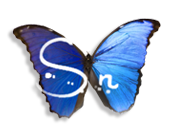Wildlife Photography
A popular genre in photography is wildlife photography, and it can be done by beginners, wildlife enthusiasts, as well as professionals alike.
What Is Wildlife Photography?
Generally speaking, wildlife photography can be described as the photographic shooting of all types of animals – ranging from butterflies to mammals and from birds to insects. However, mammals, amphibians, birds, and reptiles are among the most commonly photographed by wildlife photographers.
Wildlife photography often constitutes images of these animals in action such as fighting, eating, hunting, and even in flight.
Is Wildlife Photography Art?
There is no doubt that photography plays a big role in one’s life. Cameras are all around on cell phones, and photos are being taken all day, every day. Conscious of it or not, everywhere a person looks, they will most likely see photographic images in print media, in advertising, and on their electronic devices.
Photography, in general, can serve multiple purposes; it can tell a story, document, capture a moment in time, and it can even be art. Wildlife photography is an art form, however, that is not to say that all wildlife photos are created to be artworks or artistic forms of expression.
It took quite some time for photography, specifically wildlife photography, to be recognized as a valid art form, but today, there are many art galleries and art museums that now exhibit wildlife photographic artworks.
Some renowned and recognized photographers are SN, Man Ray, Ansel Adams, Irving Penn, and many others. The artist SN, for example, is a true epitome of an artistic wildlife photographer, with the majority of his work being based around wildlife.
It is important to keep in mind that wildlife photography does not constitute one of the traditional seven forms of art. Rather, it is included in the broader definition of visual art. Visual art can further be categorized into either commercial art or fine art.
Art is defined as something that is primarily appreciated for its visual aesthetic and the emotional impact it has on an observer, and wildlife photography has the same effect as art in this sense.
What Makes a Great Wildlife Photo?
The perfect wildlife image should contain a delicate mixture of textures, patterns, and colors, bound together in a frame where the subject is able to tell a story and evoke emotion, memories, and feelings in the observer.
It, therefore, goes without saying that for a great photograph to be produced, the photographer needs to master the technical aspects of photography. This is found to be a lot more challenging in wildlife photography, where things usually happen very quickly, even unexpectedly. Sometimes, it may also be under very challenging conditions, such as rain and bad lighting.
Knowing the capabilities of a camera, practicing, and being swift with settings are non-negotiable necessities when it comes to taking a good wildlife photograph. Experience and time spent in the wilderness also help a lot.
There are small cues that will generally give hints to the future behavior of animals; having a good idea of what the subject will do next will enable one to position themselves in the best place, adjust their settings, and test them out before the moment actually happens, thus being able to capture what is deemed to look like the unexpected.
A great wildlife photograph can be well on its way just by the photographer being prepared.
Above all else, there is also a lot of luck involved in capturing a great wildlife photograph. These are not necessarily easy shots to get, even with technical capabilities and preparation.
What Skills Do You Need to Be a Wildlife Photographer?
What does it really take to be a wildlife photographer? To start, being a professional wildlife photographer is hard work. It requires traveling to exotic, even dangerous locations, purchasing expensive camera gear and equipment, and investing almost all of one’s precious time.
More so, they need to know exactly how to get picture-perfect shots in very small-time frames. In this way, however, the skill of wildlife photography is definitely something that, over time, can be developed and improved. Meaning that to be a professional, practice is required, especially when considering how an individual cannot control when circumstances will align. Nature dictates everything in wildlife photography.
As already mentioned, one of the main skills needed to be a wildlife photographer is physical and technical ability. It is important to remember that photographing happens in the living world, and a photographer needs to be respectful of the nature around them.
To some, this may not come across as a skill that needs to be learned, but many upcoming wildlife photographers have failed here. Understanding the terrain and how an individual can have the least impact on nature is so important.
A wildlife photographer also needs to be extremely quiet. If movements are too rapid, or too much noise is being produced, animals will either see or hear a photographer from afar, causing them to be scared and run away. Staying still and moving silently are skills that good wildlife photographers possess. Patience is also of utmost importance.
Lastly, a photographer’s eyes need to be kept open. Most animals use some form of camouflage to hide, especially when predators are nearby. To be able to capture them in a photograph, they need to be seen by the photographer first.
All in all, being a wildlife photographer and capturing beautiful images of wildlife showcases both incredible talent and the wonders of the natural world. With the right attitude and determination, anyone can do it too.
I'd like to receive future updates and newsletters





